Seven best cold war missile cruisers
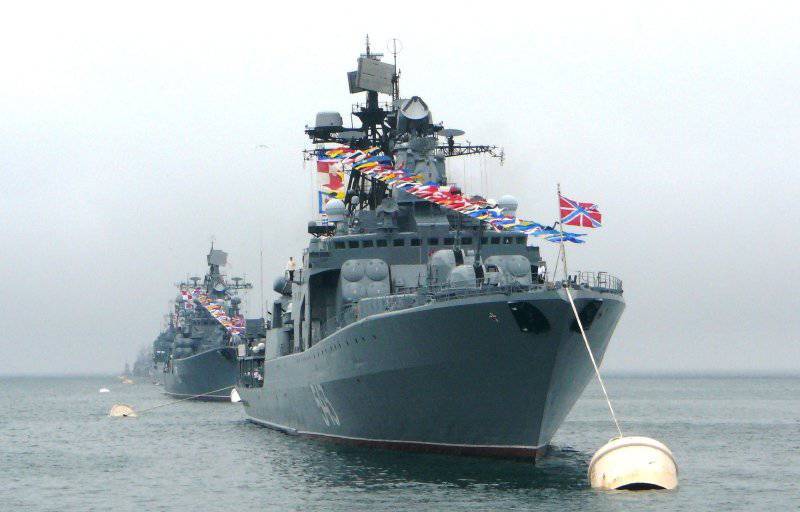
In the second half of the twentieth century, 180 independent states appeared on the world map, but from this wild variety of countries and peoples, only two superpowers - the Soviet Union and the United States - had a powerful ocean fleet. For example, no one, except us and the Americans, massively built missile cruisers. Four more European countries, in order to maintain the former status of the "naval powers", made efforts to create their own missile cruisers, but all their attempts ended with the construction of a single ship with predominantly American weapons and systems. “Ships of prestige”, nothing more.
The pioneers in the field of creating missile cruisers were the Americans - by the end of the 40-s their military industry created the first combat-ready air defense missiles, suitable for installation on the ship. In the future, the fate of the US Navy missile cruisers was determined solely by the escort functions of the aircraft carrier groupings; American cruisers never counted on a serious naval battle with surface ships.
But rocket cruisers were especially respected in our country: during the existence of the USSR, dozens of very different designs appeared on the expanses of the World Ocean: heavy and light, surface and underwater, with a conventional or nuclear powerplant, even anti-submarine cruisers and aircraft-carrier cruisers existed! It is no coincidence that missile cruisers have become the main strike force of the Soviet Navy.
In a general sense, the concept “Soviet missile cruiser” meant a large multi-purpose surface ship with a powerful anti-ship missile system.
History The seven best missile cruisers are just a brief excursion into the maritime history associated with the development of this unique class of warships. The author does not consider himself entitled to place any specific assessment and create a rating of the "best of the best." No, it will be just a story about the most prominent constructions of the Cold War era, with an indication of their well-known merits, shortcomings and interesting facts related to these death machines. However, the nature of the presentation of the material will help the reader to determine for himself who of this “magnificent seven” still deserves the highest pedestal.
Albany type missile cruisers
1944 / 1962 Full displacement 17 500 tons. Crew 1200 man.
Full stroke - 32 node. Navigation range - 9000 miles (on 15 knots.).
Armament:
- Long-range air defense system Talos (2 PU, missile 104 ammunition);
- Tartar short-range air defense system (2 PU, 84 ammunition, anti-aircraft missiles);
- ASROC anti-submarine missile system (24 rocket-torpedo ammunition);
- 8 intercontinental ballistic missiles "Polaris" (have not been installed);
- two universal guns caliber 127 mm.
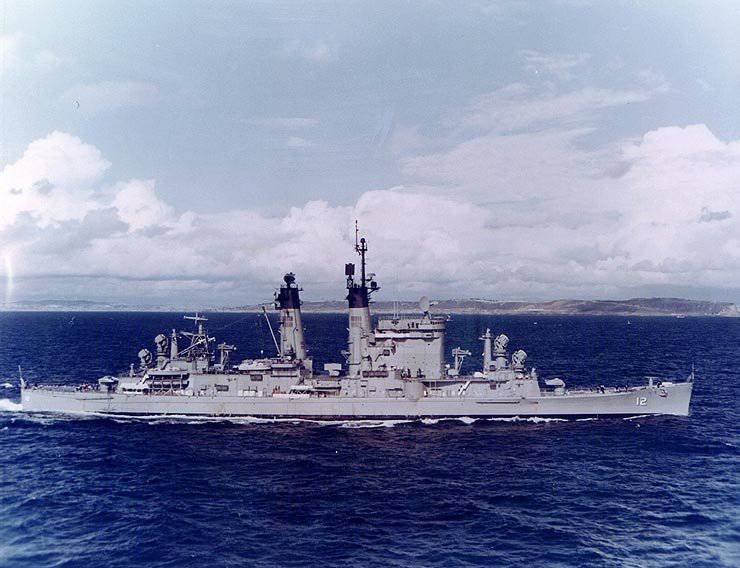
Three American monsters, rebuilt from the heavy cruisers of World War II. After the first successful experiments with rocket weapons The US Navy decided on a global modernization of the Baltimore-type artillery cruisers — they dismantled all the weapons from the ships, cut off the superstructure and spoiled their guts. And now, through 4 of the year, an incredible “thug” with a tall superstructure and mast-pipes, covered with secret radio-electronic equipment, came out to sea. The fact that this ship was once a heavy artillery cruiser of the type "Baltimore" reminded only the shape of the nasal tip.
Despite its ugly appearance, the “Albanian series” of cruisers was a cool warship capable of providing high-quality air defense of aircraft carrier formations in the near zone (by the standards of those years) - Talos air defense range was more than 100 km, and two hundred missiles on board allowed long time to fight off aviation the adversary.
Advantages:
- 15-centimeter armor belt, inherited from the heavy cruiser "Baltimore",
- 8 radar fire control,
- high radar installation height,
Disadvantages:
- lack of strike weapons,
- aluminum alloy superstructures,
- archaic, in general, construction.
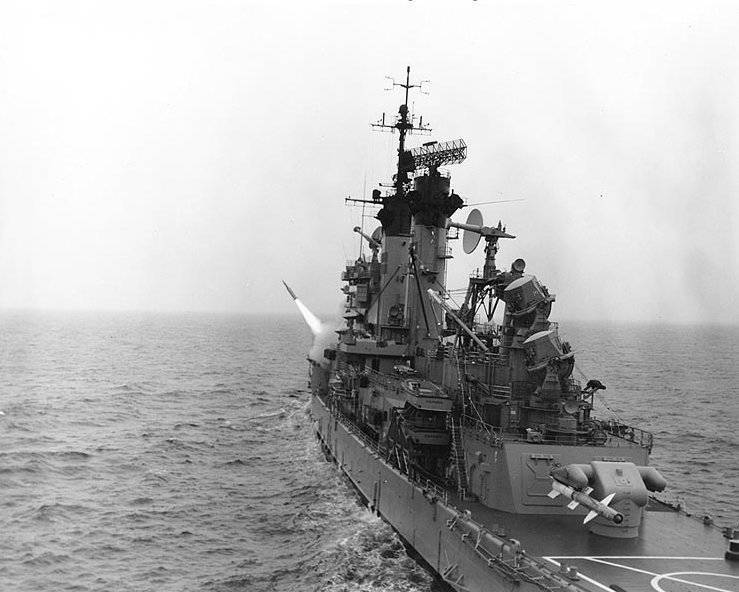
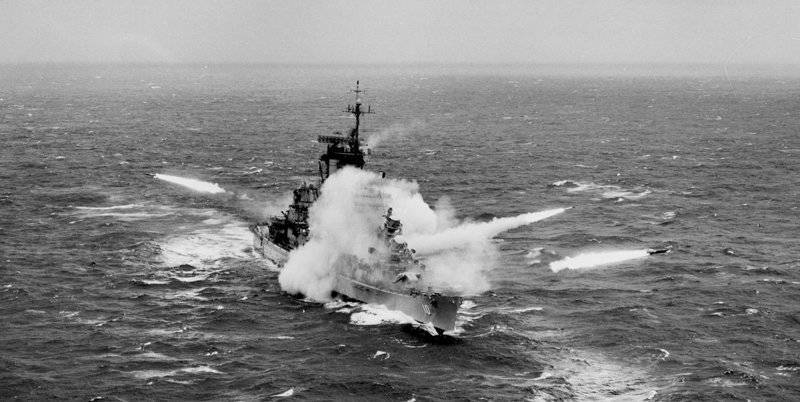
Belknap-type missile cruisers
1964 d. Total displacement 8 000 tons. Crew 380 man.
Full stroke - 32 node. Navigation range - 7000 miles (on 20 knots.).
Armament:
- universal launcher Mk.10 (80 anti-aircraft and anti-submarine missiles);
- Automated artillery installation Mk.42 127 caliber mm;
- 3 unmanned anti-submarine helicopter DASH (later replaced with the usual SH-2 "Sea Sprite" helicopter);
- two auxiliary guns of caliber 76 mm (later replaced with anti-aircraft guns "Falanx");
- 8 anti-ship “Harpoon” missiles (added after upgrading at the beginning of 1980's).
A series of 9 light escort cruisers, on which great hopes were pinned - already at birth, the Belknap-type cruisers received a versatile naval weapon complex, including the original computerized CICS, unmanned helicopters and the new AN / SQS-26 remote-powered sonar station as if capable hear the screws of the Soviet boats for tens of miles from the ship.
In some ways, the ship justified itself, in some it was not, for example, the bold design of an unmanned DASH helicopter was of little use for real use in the open sea - the control systems were too imperfect. I had to expand the hangar and the helipad under the base of a full-fledged anti-submarine helicopter.
It is noteworthy that after a short disappearance, the guns of caliber 127 mm returned to the ship - the American sailors did not dare to completely abandon the artillery.
In 60 ... 70-ies of this type of cruiser regularly patrolled off the coast of Vietnam, firing North Vietnamese MiGs with anti-aircraft missiles, who carelessly flew into the cruiser strike zone. But the Belknap was famous for not military feats - in 1975, the lead ship of this type was crushed in the Mediterranean by the aircraft carrier John Kennedy.
Cruiser cost him a navigational mistake - the flight deck of the aircraft carrier literally “cut off” all the superstructures, and a kerosene rainstorm from the broken aircraft main lines crashed down onto the wrecked remains of the ship. The ensuing eight-hour fire completely destroyed the cruiser. The restoration of the Belknap was a purely political decision, otherwise the so stupid death of the ship could undermine the prestige of the US Navy.
Advantages of Belknap:
- computerized combat information management system NTDS;
- the presence on board the helicopter;
- small size and cost.
Disadvantages:
- the only launcher, the failure of which left the ship essentially unarmed;
- flammable aluminum superstructures;
- the absence of strike weapons (which, however, is dictated by the appointment of a cruiser).
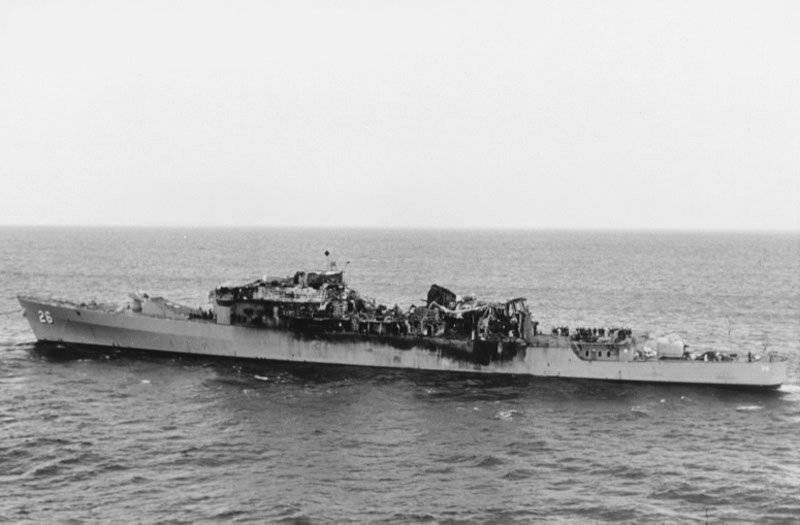
58 missile cruisers (cipher “Grozny”)
1962 d. Total displacement 5 500 tons. Crew 340 man.
Full stroke - 34 node. Navigation range - 3500 miles (on 18 knots.).
Armament:
- anti-ship complex П-35 (2 PU, ammunition 16 RCC);
- M-1 “Wave” short-range air defense system (16 anti-aircraft missiles);
- two automatic twin guns caliber 76 mm;
- 6 torpedoes caliber 533 mm;
- 2 x 12 rocket launchers RBU-6000;
- Helipad
Nikita Khrushchev's favorite ship. Small Soviet cruiser with a tremendous shock power for its size. The world's first warship equipped with anti-ship missiles.
Even with the naked eye it is noticeable how much the baby was overloaded with weapons - according to the plans of those years, the “Terrible” was almost alone to keep the watch in distant latitudes of the World Ocean. Who knows what tasks may arise before the Soviet cruiser - "Grozny" should be ready for anything!
As a result, a universal weapon complex appeared on board the ship, capable of fighting any air, surface and underwater targets. Very high speed - 34 node (more than 60 km / h), universal artillery, equipment for receiving a helicopter ...
But he was especially impressed by the P-35 anti-ship complex - eight four-ton blanks that could at any moment break from the guides and descend beyond the horizon at supersonic speeds (firing range - up to 250 km).
Despite doubts about the capabilities of long-range targeting for the P-35, powerful electronic countermeasures and anti-aircraft fire from American AUGs, the cruiser posed a deadly threat to any enemy squadron - one of the four missiles of each launcher was with a megaton surprise.
Advantages:
- exceptionally high saturation with fire agents;
- great design.
Disadvantages:
Most of the shortcomings of the “Terrible” were somehow connected with the desire of the designers to place a maximum of weapons and systems in the limited body of the destroyer.
- short cruising range;
- weak air defense;
- imperfect weapon control systems;
- fire hazardous design: aluminum superstructure and synthetic interior finish.
Long Beach Missile Cruiser
1961 d. Total displacement 17 000 tons. Crew 1160 man.
Full stroke - 30 nodes. Sailing Range - 360 000 miles.
Armament:
- Terrier medium-range air defense system (2 PU, 102 missile ammunition)
- Talos long-range air defense system (1 PU, 52 missile ammunition)
- ASROS anti-submarine missile system (24 rocket-torpedo ammunition)
- two universal guns caliber 127 mm;
- two anti-aircraft guns "Falanx", 8 PKR "Harpoon", 8 KR "Tomahawk" (upgraded at the beginning of 1980-х).
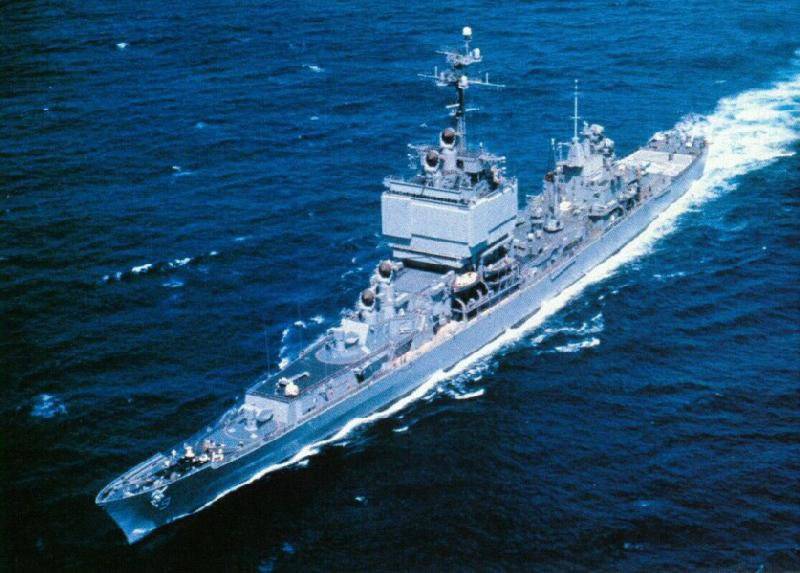
The first nuclear-powered cruiser in the world is undoubtedly worthy of the list of the best ships of the twentieth century. Concurrently, Long Beach became the world's first specialized-class missile cruiser - all previous designs (missile cruisers of the Boston type, etc.) were merely an improvisation based on World War II artillery cruisers.
The ship turned out gorgeous. Three rocket systems for various purposes. The unusual “box-like” shape of the main superstructure, dictated by the installation of the SCANFAR phased radar, is also a unique radio engineering system of its time. Finally, the nuclear heart of the cruiser, which allowed us to accompany the atomic carrier aircraft carrier Enterprise everywhere, and this miracle was created to interact with.
However, for all this, an incredible price was paid - 330 million dollars (about 5 billion at the current rate!), Moreover, the imperfection of nuclear technologies did not allow creating a compact YAU of necessary power in 50-s - the cruiser rapidly “grew” in size, reaching finally 17 thousand tons. Too much for escort ship!
In addition, it turned out that Long Beach is not able to realize its advantage in practice. Firstly, the ship’s autonomy is limited not only by fuel supplies. Secondly, in the retinue of an aircraft carrier there were many ships with conventional propulsion systems, which made it difficult for the atomic cruiser to move fast.
Long Beach honestly served for 33 years. During this time, he left a million nautical miles behind the stern, while managing to fight in Vietnam and Iraq. Due to its exceptional complexity and cost, he remained a lone “white elephant” fleet, however, had a significant impact on the development of world shipbuilding (including the birth of our next "hero").
Advantages of "Long Beach":
- unlimited autonomy for fuel reserves;
- radar with PAR;
- versatility.
Disadvantages:
- monstrous cost;
- less durability compared to conventional cruisers.
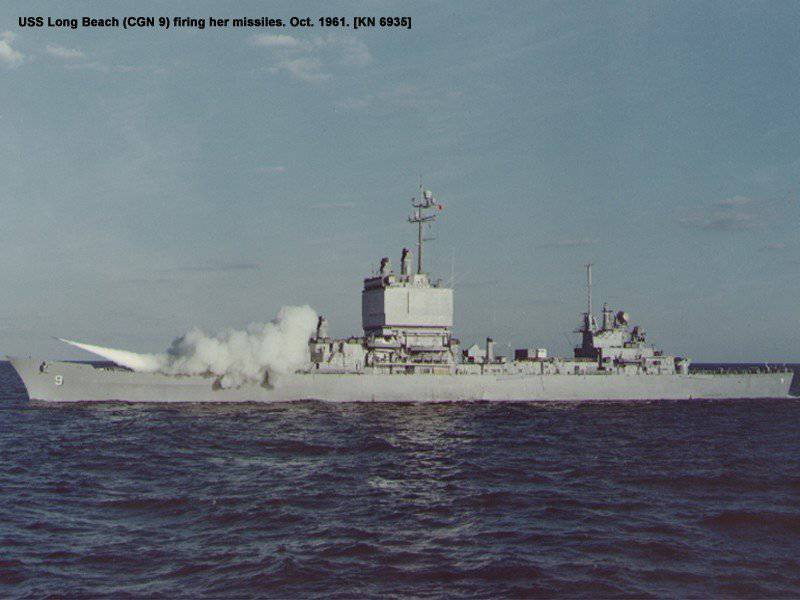
Heavy nuclear missile cruiser 1144.2 Ave. (Orlan code)
1998 d. Total displacement 26 000 tons. Crew 635 man.
Full stroke - 32 node. Navigation range - not limited to fuel reserves.
Armament:
- anti-ship complex "Granit" (20 PU, ammunition 20 missiles);
- Long-range air defense system C-300F “Fort” (6 PU, 48 missile ammunition);
- Long-range air defense system C-300FM "Fort-M" (6 PU, ammunition 46 missiles);
- Short-range air defense system "Dagger" (12 PU, 128 missile ammunition);
- anti-submarine complex "Waterfall" (ammunition 20 rocket-torpedo);
- one twin automated gun mount caliber 130 mm;
- 6 anti-aircraft missile and artillery complexes "Dirk";
- three jet bomb;
- three helicopters.
For comparison, the Peter the Great TAVKR was chosen - the last and most accomplished of the Orlan heavy-duty nuclear-powered missile cruisers. The real Imperial cruiser with a tremendous range of weapons - on board it collected the whole range of systems in service with the Russian Navy.
Theoretically, in a one-on-one battle, the Orlan has no equal among all the ships of the world - a huge ocean killer can deal with any adversary. In practice, the situation looks much more interesting - the enemy, against whom the Eagles were created, does not go alone. What does the Orlan expect in a real battle with an aircraft carrier and its escort of five missile cruisers? Glorious Gangut, Chesma or terrible Tsushima mayhem? No one knows the answer to this question.
The appearance of the first "Orlan" in 1980, the whole world stirred up a lot - in addition to cyclopean sizes and heroic statues, the Soviet heavy cruiser became the first warship in the world with underdeck vertical launch systems. A lot of fear caused the anti-aircraft complex C-300F - nothing like this at that time simply did not exist in any country of the world.
In fact, the first ship with the established C-300F experimental complex was BOD Azov. In addition, the C-300F guides are installed not quite vertically, but at an angle 5 ° to the normal in order to avoid a missile falling onto the deck in the event of a failure of the starting engine.
As in the case of the American "Long Beach", when discussing the "Orlan" often sounds the opinion of the adequacy of the creation of such a miracle. Firstly, nuclear submarine missiles of the 949A project look more attractive for the destruction of AUG. The submarine’s subtlety and security are an order of magnitude greater, the cost is less, with the 949A volley-24 of the Granit rocket.
Secondly, 26 thous. Tonnes of displacement is a direct consequence of the presence of nuclear reactors, which do not provide any real advantages, only in vain occupying space, complicating maintenance and worsening the survivability of a ship in battle. It can be assumed that without YASU, the Orlan’s displacement would have decreased by half.
By the way, a paradoxical coincidence, the bald eagle is the national emblem of the USA!
Tikonderoga type missile cruiser
1986 d. Total displacement 10 000 tons. Crew 390 man.
Full stroke - 32 node. Navigation range - 6000 (on 20 knots.).
Armament:
- 122 vertical launchers Mk.41 (launch of virtually all types of missiles in service with the US Navy, with the exception of submarine-based ballistic missiles);
- 8 anti-ship harpoon missiles;
- two lightweight universal artillery systems Mk.45 caliber 127 mm;
- six anti-submarine torpedoes caliber 324 mm;
- two anti-aircraft guns "Falanx";
- two automatic guns "Bushmaster" caliber 25 mm.
“Stand by admiral Gorshkov:“ Aegis ”- at sea!” - “Beware of admiral Gorshkov: Aegis - at sea!” - the first Ticonderoga, an unsightly ship outside, with the most up-to-date electronic content, went to sea with this message.
For comparison, the CG-52 cruiser “Bunker Hill” was chosen - the lead ship of the second series “Tikonderog”, equipped with the Mk.41 air defense system.
A thoroughly thought-out modern ship with unique fire control systems. The cruiser is still focused on providing airborne and anti-submarine defense of aircraft carrier connections, but can independently deliver massive strikes on the coast with the help of Tomahawk cruise missiles, the number of which on board can reach hundreds of units.
The highlight of the cruiser is the combat information control system Aegis. Coupled with the stationary phased panels of the AN / SPY-1 and 4 radar fire control radars, the ship’s computers can simultaneously track airborne, surface, and underwater targets to 1000, while conducting their automatic selection and, if necessary, attacking 18 of the most dangerous objects. At the same time, the energy capabilities of AN / SPY-1 are such that the cruiser is able to detect and attack even fast-moving point targets in low-Earth orbit.
Advantages of "Ticonderoga":
- unprecedented versatility at minimum cost;
- huge shock power;
- the ability to solve missile defense tasks and destroy satellites in low orbits;
Disadvantages of Ticonderoga:
- limited size, and, as a consequence, the dangerous congestion of the ship;
- widespread use of aluminum in the design of the cruiser.
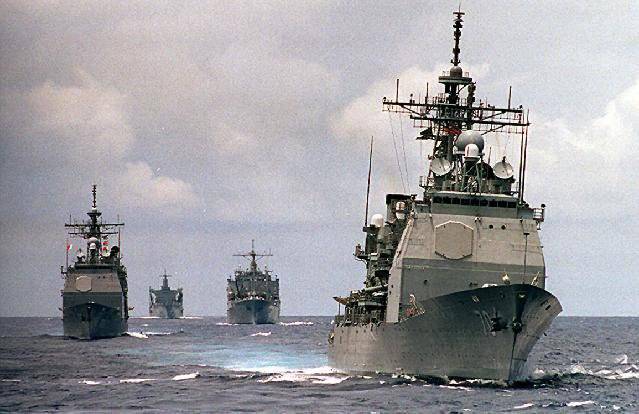
Missile Cruiser pr. 1164 (code "Atlant")
1983 d. Total displacement 11 500 tons. Crew 510 man.
Full stroke - 32 node. Navigation range - 6000 (on 18 knots.).
Armament:
- anti-ship missile system П-1000 "Vulkan" (8 twin PU, ammunition 16 missiles);
- Anti-aircraft missile complex S-300F "Fort" (8 drum PU, ammunition 64 missiles);
- two Osa-MA short-range anti-aircraft missile systems (2 beam launchers, 40 ammunition);
- anti-submarine complex "Waterfall" (ammunition 10 rocket-torpedo);
- one twin automated gun mount caliber 130 mm;
- three batteries of automatic anti-aircraft guns AK-630 (total 6 guns + 3 radar fire control);
- two jet bomb;
- anti-submarine helicopter and hangar for long-term storage.
When the 2,25 has a smaller displacement times than the huge atomic Orlan, the cruiser Atlant retains the 80% of its strike power and up to the 65% of its anti-aircraft weapons. In other words, instead of building one Orlan supercar, you can build two Atlants!
Two Atlantic missile cruisers, by the way, are 32 supersonic anti-aircraft missiles "Vulkan" and 128 anti-aircraft missiles C-300F. As well as 2 helicopter pads, X-NUMX AK-2 artillery mounts, two Fregat radars and two hydroacoustic stations. And this is all instead of one "Orlan"! Those. This suggests an obvious conclusion - the missile cruiser of the 130 Ave is the very “golden mean” between the size, cost, and combat capabilities of the ship.
Even despite the general moral and physical obsolescence of these cruisers, their potential is so high that it allows the Atlants to act on equal terms with the most modern foreign missile cruisers and destroyers of URO.
For example, the unparalleled C-300F complex - even the modern US Navy anti-aircraft missiles, due to the limited size of standard MK.41 ATC cells, are inferior in terms of energy characteristics to the Fort missiles (to put it simply - they are twice as light and twice as slow).
Well, it remains to wish that the legendary "grin of socialism" modernized as often as possible and remain in the military service as long as possible.
The merits of "Atlanta":
- balanced design;
- excellent seaworthiness;
- missile complex C-300F and P-1000.
Disadvantages:
- the only radar control the shooting of the complex C-300F;
- the lack of modern self-defense systems;
- overly complex design of gas turbines.
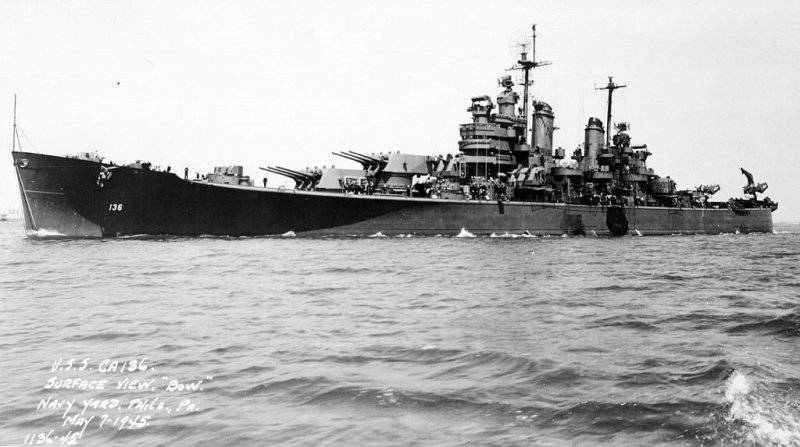

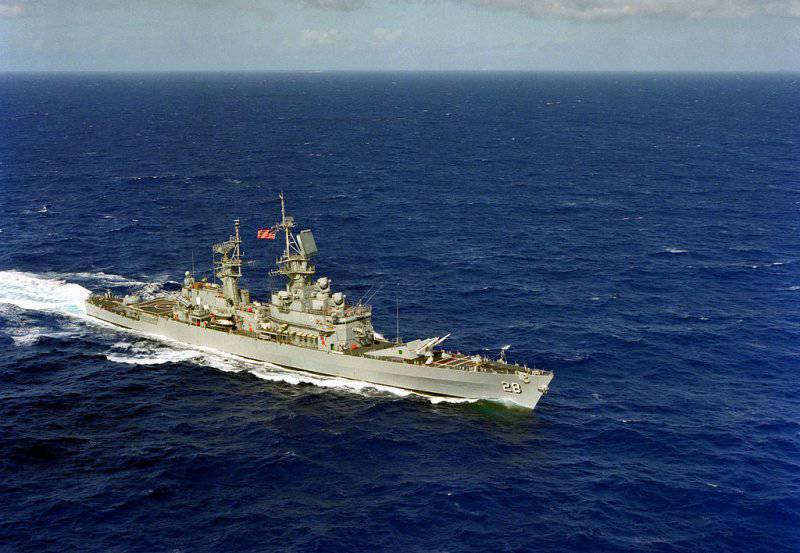
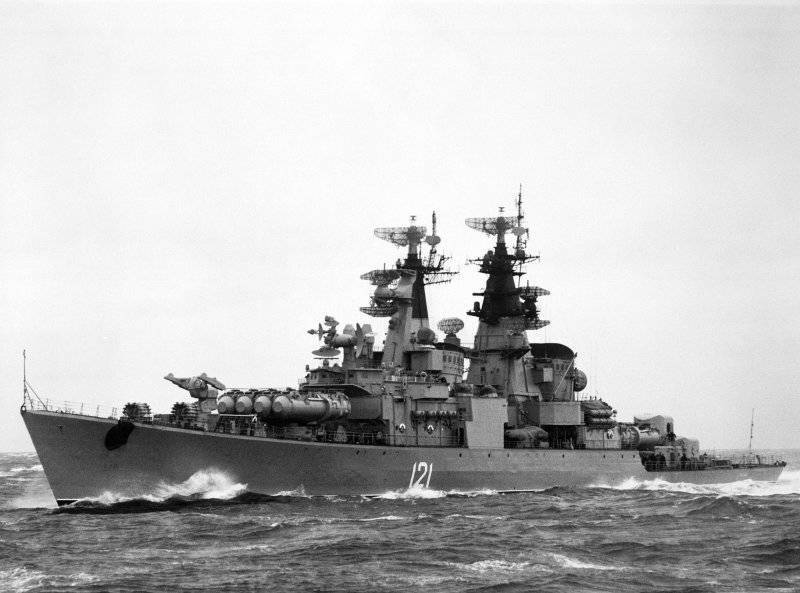
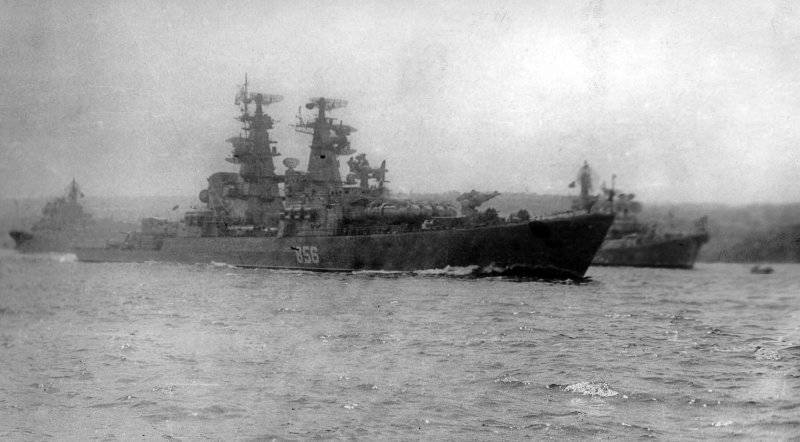
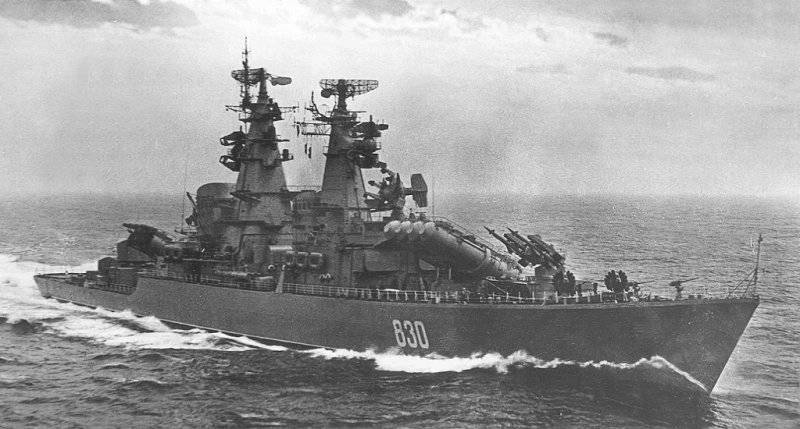
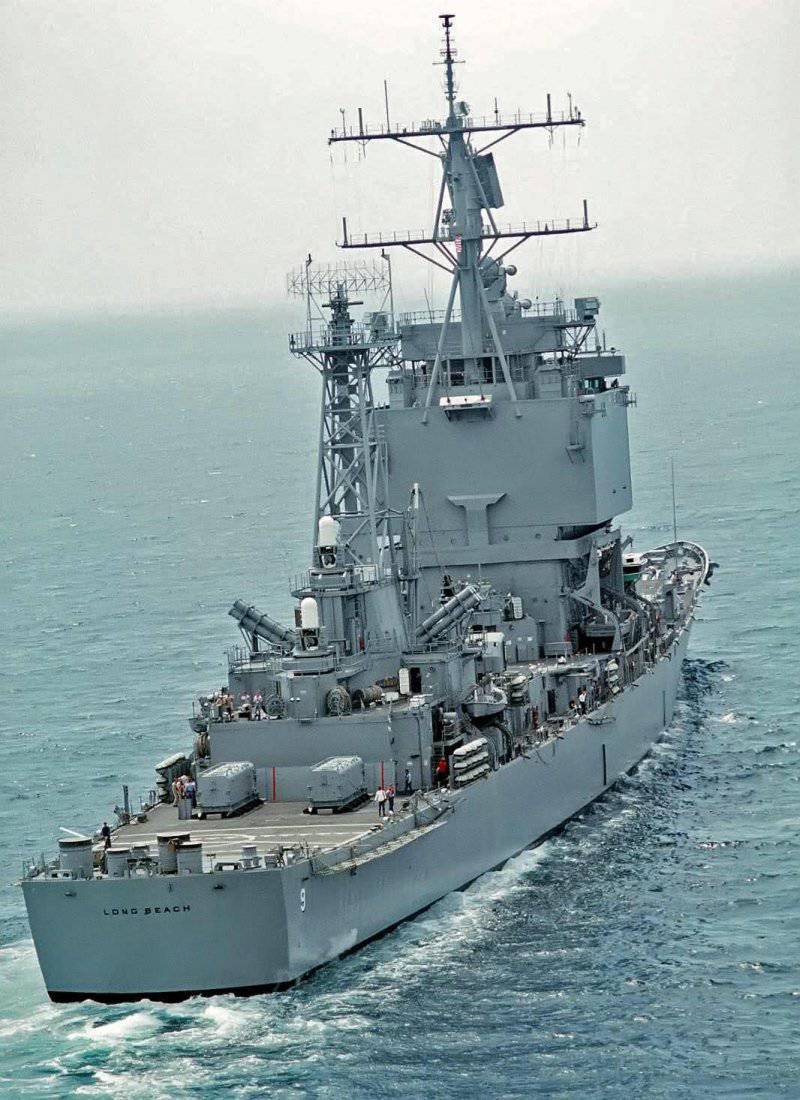
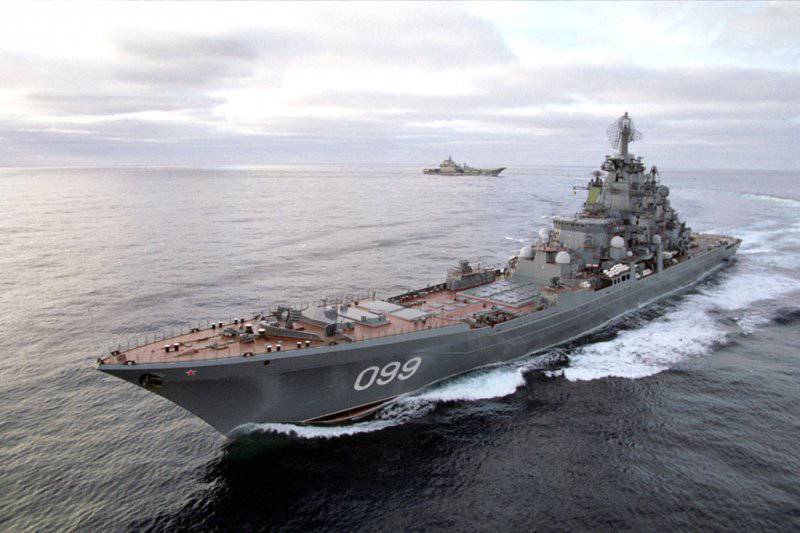

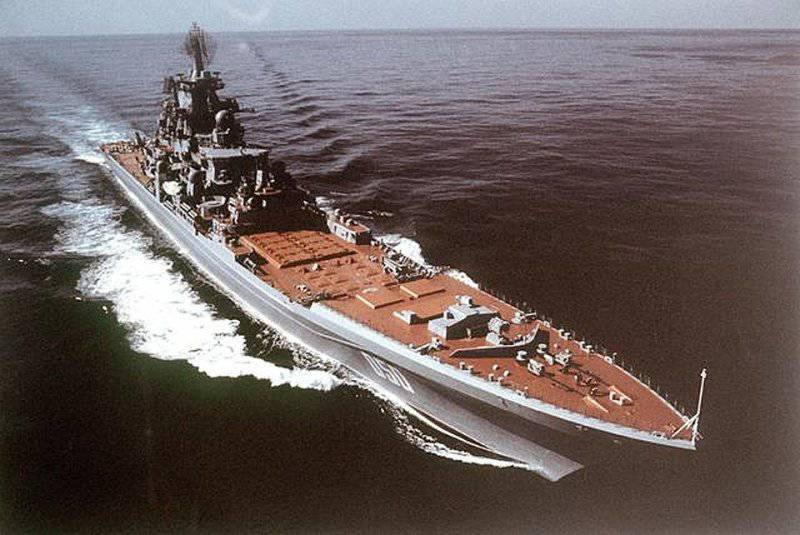
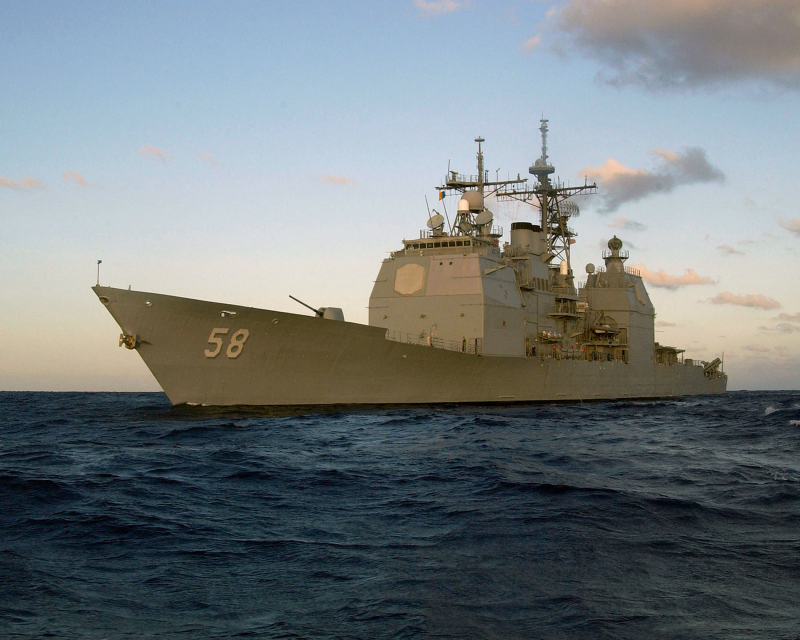
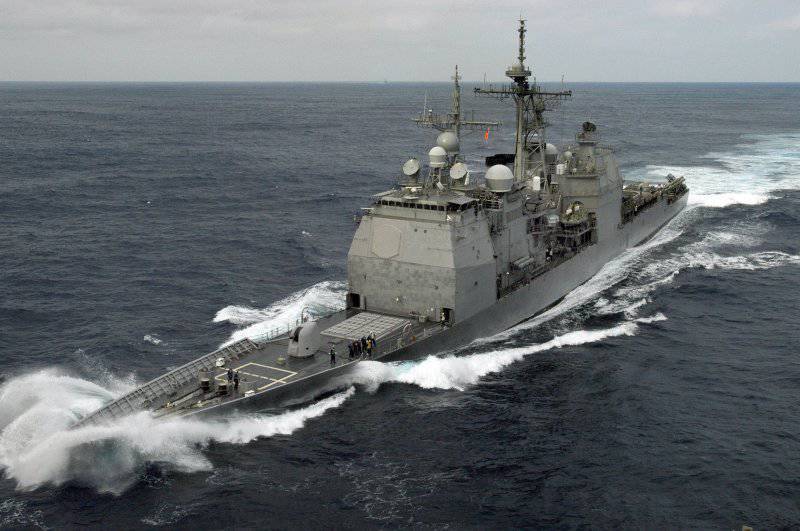
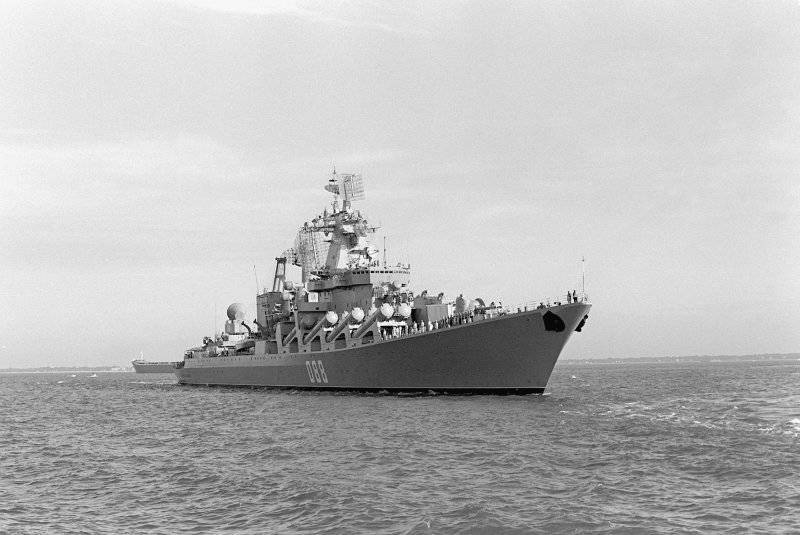
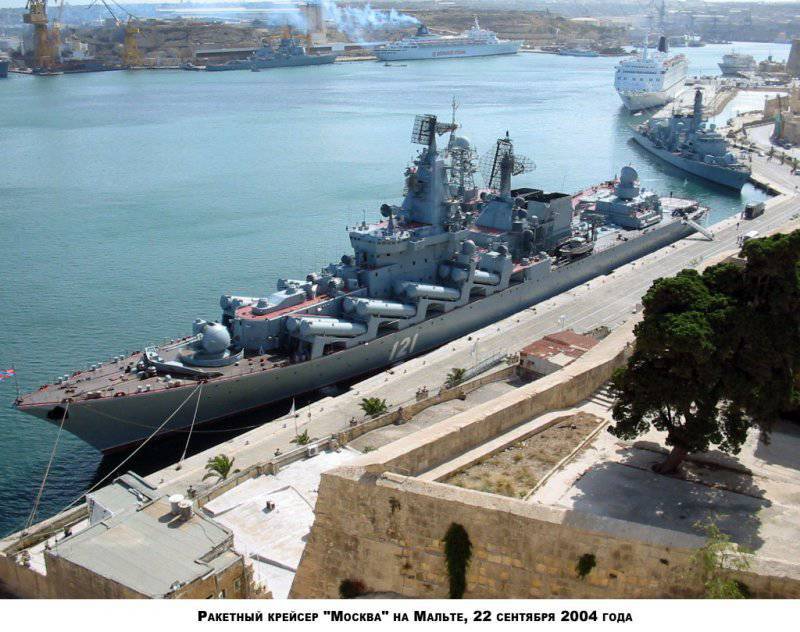
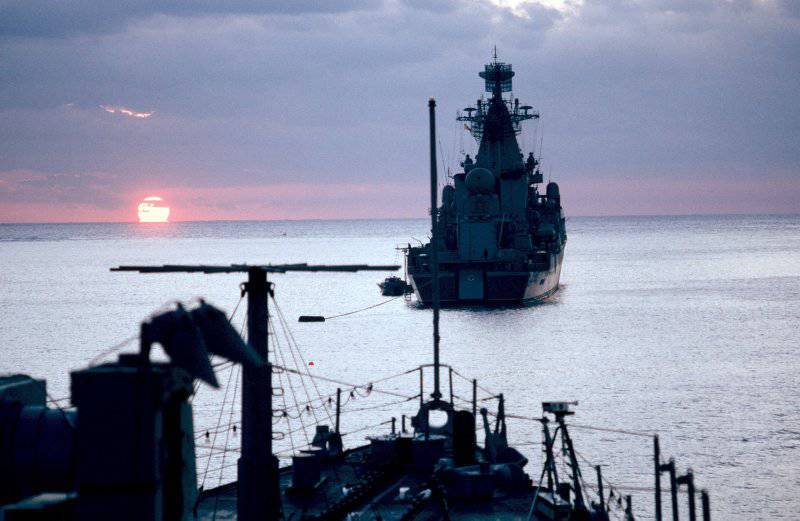
Information